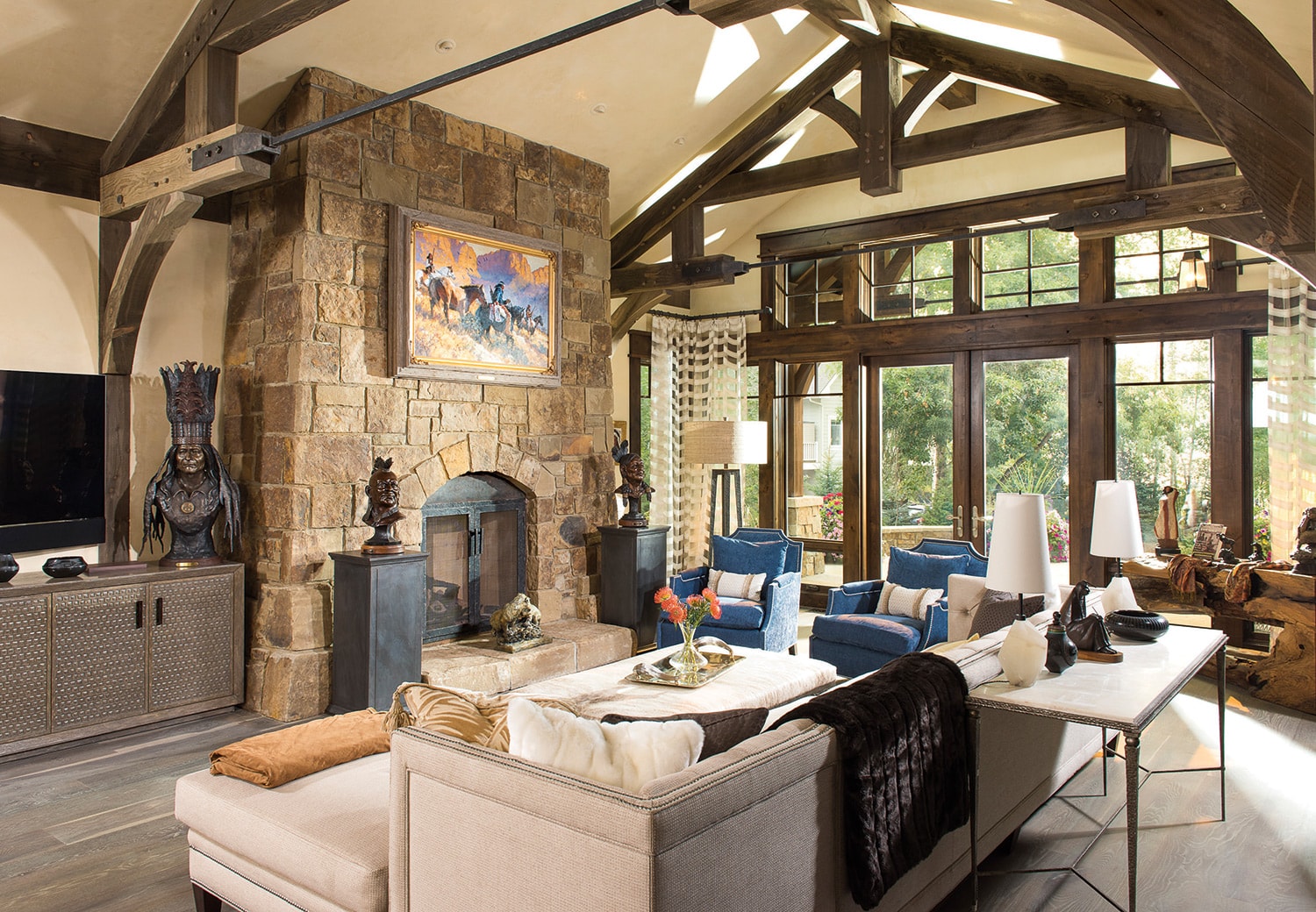
05 Oct Western Design: Town & Country
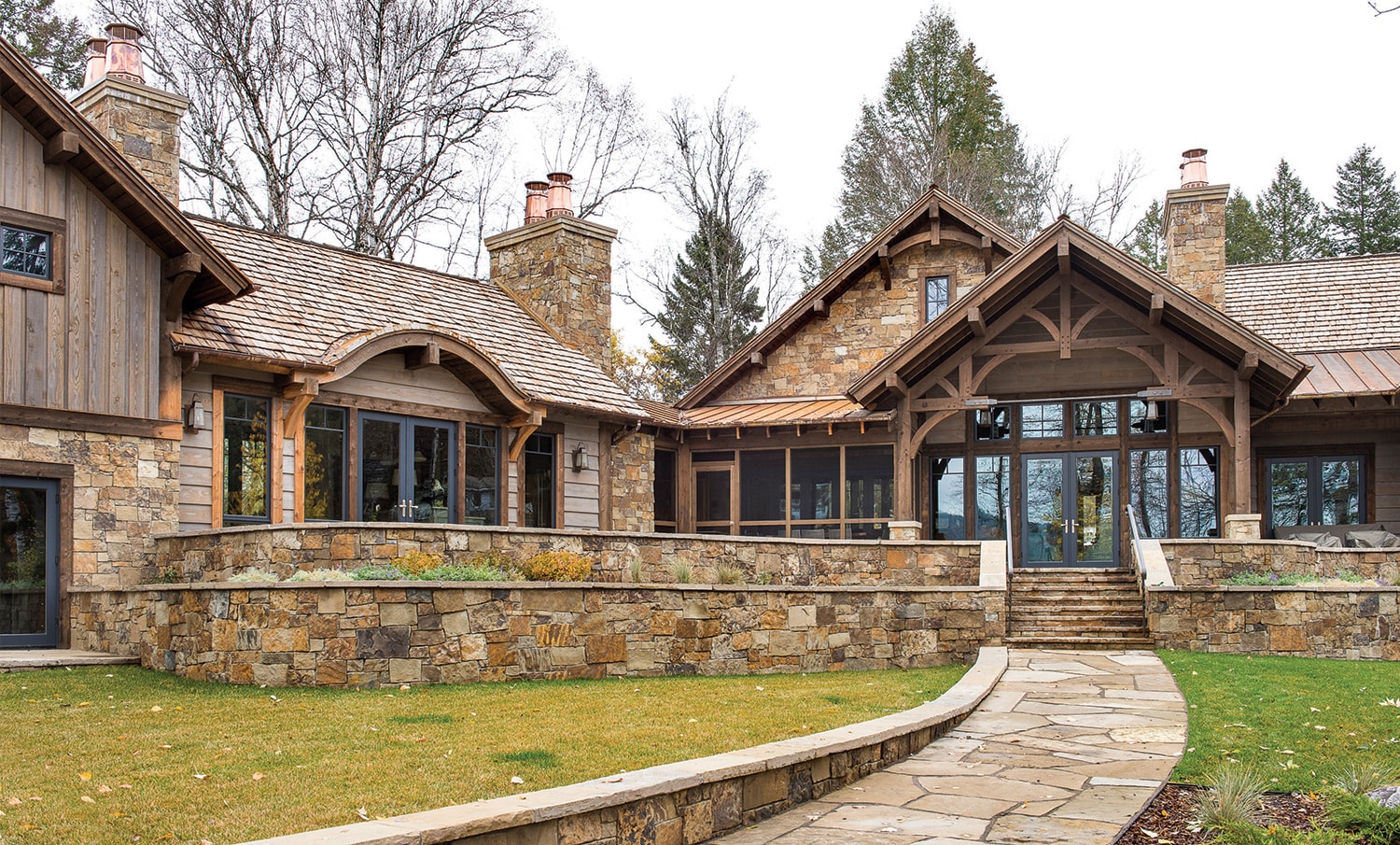 The exterior features timbers, curved beams, stone, wood, cedar shakes, and metal roofing. The main volume of the house faces the lake, while a guest wing projects off at an angle. The house was sited to preserve the mature trees.
The exterior features timbers, curved beams, stone, wood, cedar shakes, and metal roofing. The main volume of the house faces the lake, while a guest wing projects off at an angle. The house was sited to preserve the mature trees.
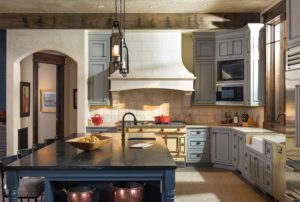
French chateau influences are seen in the kitchen range, hood design, and in the use of Provençal blue throughout the home.
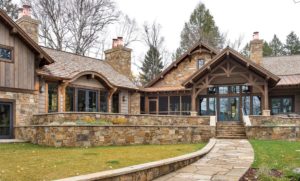
From the street, the home’s presence keeps with the neighborhood; once inside, the volume opens up as one is drawn toward the lake.
As one approaches town, the lakefront lots become elongated, each claiming a bit of coveted shoreline. There, mature trees provide shade and privacy, but pose logistical hazards for designing and building. The homeowners settled on a parcel blessed with trees, a day cabin at lake’s edge, and spectacular views. First on site was Bob Heberly of Dick Anderson Construction, whose firm had built a cabin for the clients in another community some years before. Architect Jesse Vigil of CTA Architects Engineers was brought on shortly after. Together with the owners, the group contemplated the property: a long, narrow lot with a moderate grade descending toward the water, and located on a densely settled street.
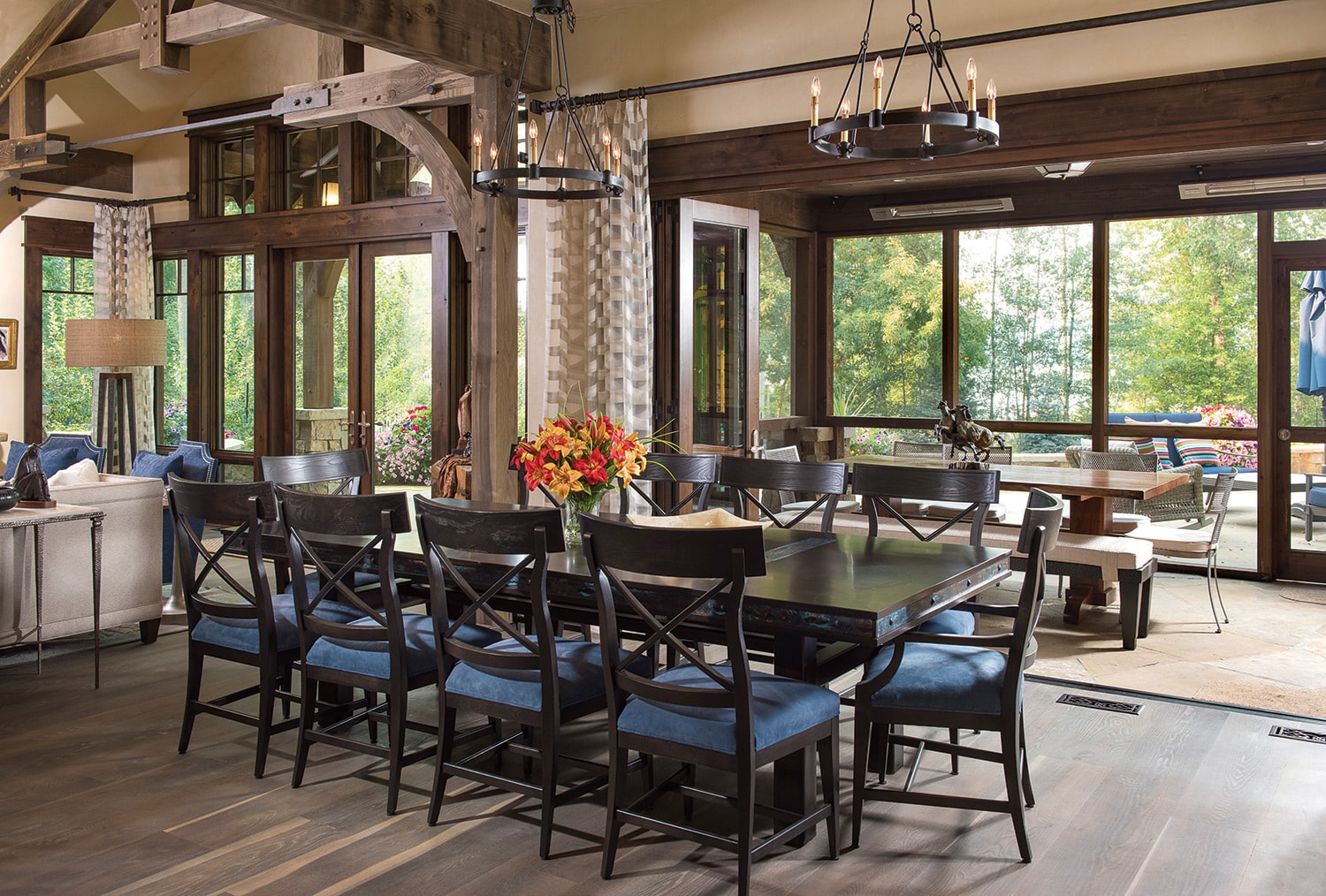 Walls can be made to disappear so that the indoor and outdoor dining rooms can act as one combined space for large gatherings. Sheer curtains soften the room’s hard surfaces and provide protection from glare.
Walls can be made to disappear so that the indoor and outdoor dining rooms can act as one combined space for large gatherings. Sheer curtains soften the room’s hard surfaces and provide protection from glare.
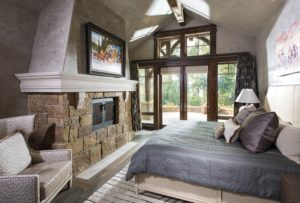
Bedrooms are intimately sized to keep the spaces cozy and the focus on the great outdoors.
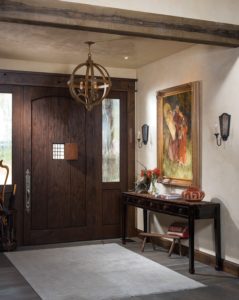
The entry opens to the soaring main volume of the public rooms, which naturally draws visitors into the heart of the home and to the lake views
Between the town’s tight building restrictions and the requisite setback from the lake and neighbors, Vigil had to find a way to accomplish the clients’ design goals: a sense of the lake, roomy and comfortable, separate-but-attached quarters for extended family, plenty of room for entertaining, indoor- outdoor cooking and dining, all in an original fresh mountain style. Meanwhile, Heberly went in search of “Caterpillar’s smallest forklift” to manage the tight maneuvers that would be necessary in construction. The result is a 6,800-square-foot home with 2,100 square feet of patio facing the lake. A two-tiered garden overlooks the park-like yard and descends to a flagstone path that leads to the waterfront. The structure manifests in a zigzag design, with the garage closest to the street, the central portion anchoring the lot and commanding dead-on lake views. And there are generous separate but contiguous guest quarters. The timeless day cabin, a one-room structure with a fireplace, was re-sided and had skylights added, but was otherwise left intact.
From the street, the ruggedly refined structure blends into the neighborhood through a combination of wood siding and timbers, a cedar shake roof, and multiple pitched rooflines, with the lake visible through the trees beyond the edges of the home. The house feels appropriate to its locale, with projecting timber rafters and curved beams, while distinguishing itself with stone façades, and a stone “eyebrow” above the center window nearest the street. A closer look reveals the letters C and D within the arch, alluding to the nickname bestowed on the house by the builders, the D representing the name of the street, the C for chateau.
“When we started the design process, the clients wanted a Montana influence with a modern rustic feel,” Vigil explains. “They liked woodsy and rustic, but they wanted to update the style. They were looking for a fresh approach, and French country kept coming up.” The result, he says, was a design that “blended the styles between mountain rustic and French chateau and that softened some of the roughness.”
 An outdoor dining room, screened to keep out bugs, has its own cooking and serving area, an Argentinian grill, and a live-edge table. “Cooking is very important to the client,” says CTA architect Jesse Vigil. “Everything was centered on cooking and entertaining.”
An outdoor dining room, screened to keep out bugs, has its own cooking and serving area, an Argentinian grill, and a live-edge table. “Cooking is very important to the client,” says CTA architect Jesse Vigil. “Everything was centered on cooking and entertaining.”
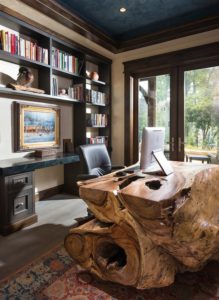
The husband’s office is dominated by a dramatic, handcrafted burled wood desk, a nod to the surrounding natural setting.
The chateau influence is most apparent in the interior with use of Provençal yellows in the authentic French country oven and on the walls of the master bath, along with blues,
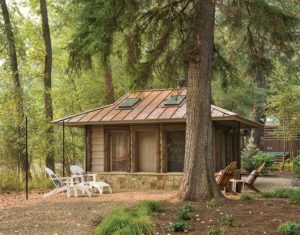
A previously existing and exquisitely simple day cabin — refreshed rather than rebuilt — offers rustic living close to the lake’s edge.
which appear on a pair of living room armchairs and dining chairs, one wall of the dining room, the kitchen cabinetry, and the painted base of the kitchen’s central island. The interiors, gracious in proportion, marry a mountain modern aesthetic — large windows and a dynamic interplay of beams, trusses, and cables in the vaulted great room — with plaster walls and an impressive Western art collection.
Avid art aficionados who possess a keen eye for color, proportion, and scale, the owners were intimately involved throughout the project. “They knew they wanted wood, and they knew they wanted organic pieces,” says CTA interior designer Catherine Jakes. “There’s a mix of textures, and that dusty blue color is carried throughout a lot of spaces for continuity. We looked at durability and specialness; we wanted things you weren’t going to find in a catalog. Everything was custom. We used a lot of leather, a lot of creams, grays, browns — and that blue.”
For a husband and wife who enjoy hosting family gatherings and entertaining friends and neighbors, the dining room was thoughtfully considered. Its large bi-fold doors open to a screened outdoor dining room that features a handcrafted live-edge dining table, and a serving area with a wood-fired bread oven and an Argentinian grill. The spacious guest quarters benefit from their own entry and patio, plus a full kitchen, laundry, dining area, and living room. “The idea was that when guests come, they feel they’re staying in their own place,” explains Vigil. The house also works well when the homeowners are in residence with just their dogs, as the living area is intimate; yet it expands for large parties, opening up to the patio and screened dining area.
The success of the project is due to the strength of the team and an unwavering vision, according to Jakes. “They really knew what they liked. They wanted to keep things classic and not too trendy. The fact that they had amazing art just made our jobs easier.”
Vigil agrees, noting that the design is timeless, yet unusual enough to be interesting. “The steel and iron against the wood gives interest and depth and plays the French Provençal off the mountain rustic. The beam work and trusses are more rustic while the plaster walls are more refined.” The result, he says, is “a more livable elegance.”




No Comments